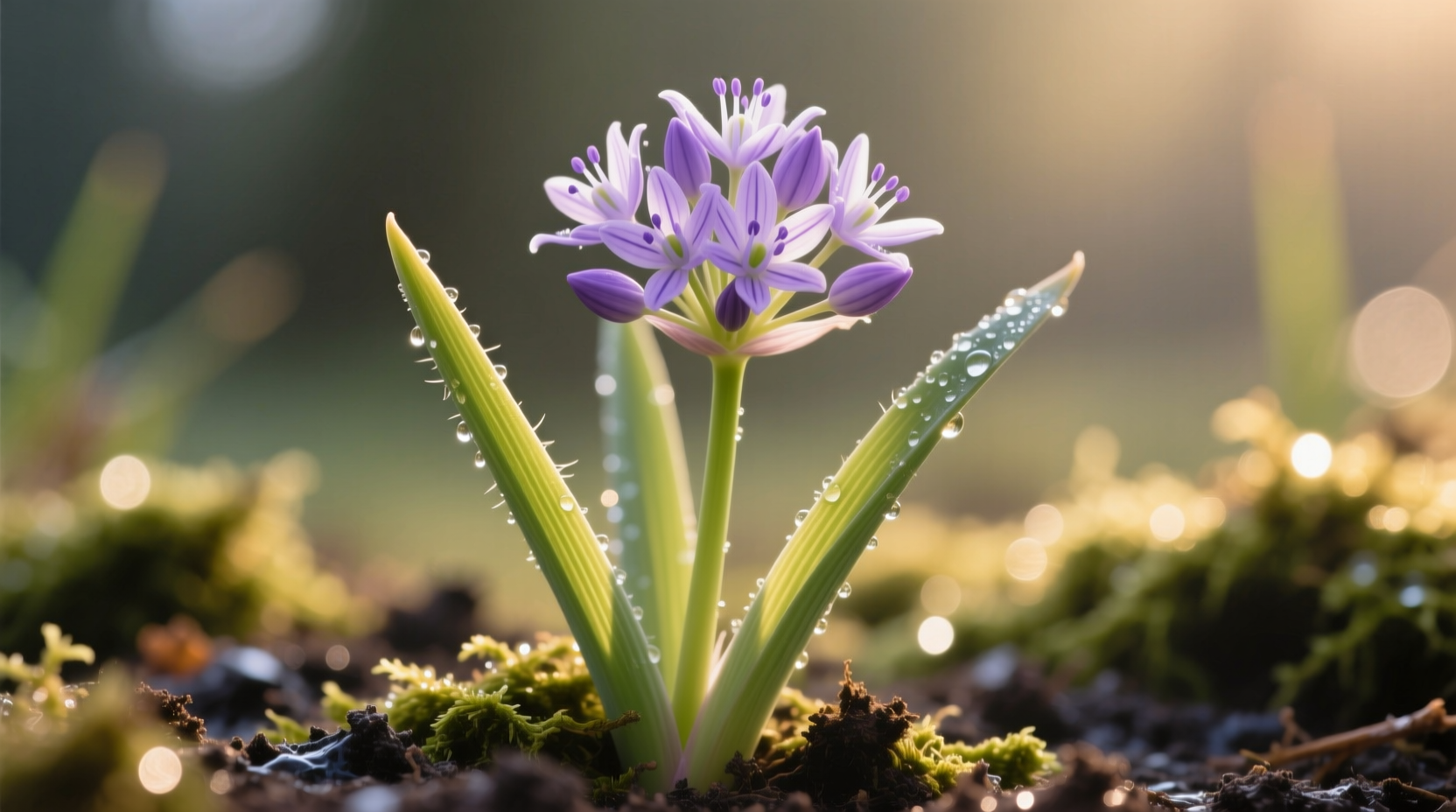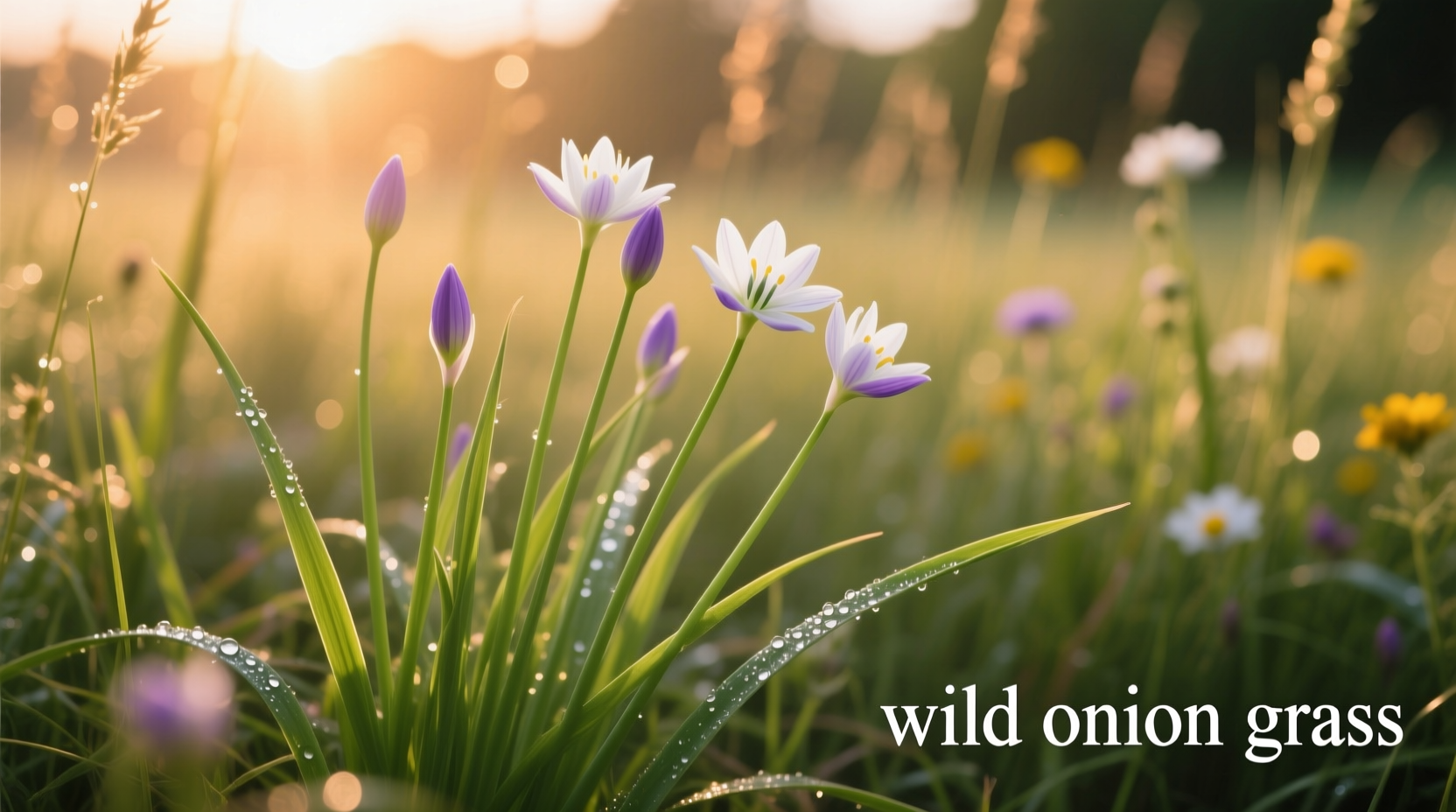Unlock the Culinary Potential of Wild Onion Grass
For foragers and culinary enthusiasts, wild onion grass represents one of nature's most accessible and versatile edible plants. Unlike many wild edibles that require specialized knowledge to identify safely, this common plant offers a straightforward identification method and delicious flavor profile that enhances countless dishes. Whether you're an experienced forager or just beginning your wild food journey, understanding how to properly identify, harvest, and use wild onion grass can transform your culinary experiences.
What Exactly Is Wild Onion Grass?
Wild onion grass (Allium vineale), also known as field garlic or crow garlic, belongs to the Allium family that includes cultivated onions, garlic, and chives. This perennial plant features hollow, cylindrical leaves that grow from small underground bulbs. During late spring and early summer, it produces small pink or purple flower clusters that eventually develop into bulbils—tiny aerial bulbs that can propagate new plants.
The most distinctive characteristic that sets wild onion grass apart from potentially dangerous look-alikes is its unmistakable onion or garlic aroma when any part of the plant is crushed. This simple sensory test provides immediate verification of its identity and edibility.
| Feature | Wild Onion Grass | Death Camas (Toxic Look-alike) |
|---|---|---|
| Leaf Structure | Hollow, cylindrical, grass-like | Solid, flat, grass-like |
| Aroma When Crushed | Distinct onion/garlic scent | No distinctive odor or unpleasant smell |
| Flowers | Pink or purple clusters | White or yellow star-shaped flowers |
| Bulbs | Small, clustered, onion-scented | Egg-shaped, no onion scent |
Where and When to Find Wild Onion Grass
Wild onion grass thrives in diverse environments across North America, having been introduced from Europe. You'll commonly find it in:
- Pastures and meadows
- Roadside ditches
- Abandoned fields
- Lawns and parks
- Woodland edges
The USDA Plants Database confirms its widespread distribution across 48 U.S. states, with particularly dense populations in the eastern and central regions. According to Cornell University's extension service, wild onion grass prefers well-drained soils but demonstrates remarkable adaptability to various soil conditions.
Seasonal availability varies by region:
- Spring: Best time for harvesting tender leaves and developing bulbs
- Early Summer: Optimal for collecting flowers and bulbils
- Fall: Second growth period in many regions
- Winter: Evergreen in milder climates
Safe Identification: Your Critical First Step
Before harvesting any wild plant, proper identification is non-negotiable. For wild onion grass, follow this verification process:
- Smell Test: Crush a small portion of the leaf between your fingers. Genuine wild onion grass emits an immediate onion or garlic aroma. If no scent appears, do not consume.
- Leaf Examination: Confirm the leaves are hollow and cylindrical, not flat or solid.
- Location Check: Ensure you're not harvesting from areas treated with pesticides, herbicides, or near potential contaminants like road runoff.
- Multiple Characteristics: Verify at least three identifying features before consumption.
Remember that death camas (Toxicoscordion venenosum), a highly toxic plant, grows in similar habitats and can be mistaken for wild onion grass by inexperienced foragers. The absence of onion scent is the most reliable differentiator.
Sustainable Harvesting Practices
Responsible foraging ensures wild plant populations remain healthy for future generations. When harvesting wild onion grass:
- Take only what you need—never more than one-third of a plant cluster
- Use scissors to cut leaves rather than pulling entire plants
- Leave mature flowering plants to reproduce
- Avoid harvesting in protected areas or private property without permission
- Rotate harvesting locations to prevent over-collection in any single area
According to Penn State Extension's sustainable foraging guidelines, wild onion grass populations can withstand moderate harvesting when ethical practices are followed, making it an excellent choice for beginner foragers.
Culinary Applications: From Field to Feast
Wild onion grass offers culinary versatility across its entire plant structure:
- Leaves: Substitute for chives in salads, soups, and egg dishes (milder than cultivated onions)
- Bulbs: Use like pearl onions in pickling or roasting (smaller and more delicate than garden onions)
- Flowers: Edible blossoms add visual appeal and subtle flavor to salads and garnishes
- Bulbils: Tiny aerial bulbs can be pickled or used as caper substitutes
When preparing wild onion grass, remember that heat diminishes its flavor more quickly than cultivated onions. Add it toward the end of cooking for maximum impact. The younger, thinner leaves offer the most delicate flavor, while thicker leaves provide more pronounced onion notes.

Nutritional Benefits Worth Noting
Wild onion grass provides notable nutritional advantages over cultivated varieties:
- Higher concentrations of allicin, the compound responsible for many onion health benefits
- Rich in vitamin C and potassium
- Contains flavonoids with antioxidant properties
- Natural prebiotic properties that support gut health
Research published in the Journal of Agricultural and Food Chemistry indicates that wild allium species often contain higher levels of beneficial phytochemicals than their cultivated counterparts due to natural selection pressures.
Avoiding Common Foraging Mistakes
Even experienced foragers occasionally make these errors with wild onion grass:
- Assuming all onion-scented plants are safe: Some toxic plants may grow near true alliums and acquire faint onion scent from soil absorption
- Harvesting from contaminated areas: Never collect near roadsides with heavy traffic or agricultural fields with chemical treatments
- Over-harvesting: Taking too much from a single location damages plant populations
- Misidentifying young plants: Early growth stages can resemble grasses without distinctive scent
When in doubt about identification, consult multiple field guides or connect with local foraging groups before consumption. The North American Foraging Society recommends that beginners always forage with experienced mentors when possible.
Preservation Techniques for Year-Round Enjoyment
Extend your wild onion grass harvest with these preservation methods:
- Freezing: Chop leaves and freeze in ice cube trays with water or olive oil
- Drying: Hang small bundles upside down in a dark, well-ventilated area
- Pickling: Preserve bulbs and bulbils in vinegar-based solutions
- Pesto: Blend with nuts, oil, and cheese for frozen storage
Unlike cultivated onions, wild onion grass doesn't store well in root cellars. Preservation through freezing maintains the best flavor profile for culinary use.
Responsible Foraging Ethics
As interest in wild foods grows, maintaining ethical foraging practices becomes increasingly important. Always:
- Obtain permission before harvesting on private property
- Follow local regulations regarding wild plant collection
- Leave no trace of your harvesting activities
- Share knowledge with others to promote sustainable practices
- Support conservation efforts for native plant species
By approaching wild onion grass with respect and knowledge, you contribute to the preservation of this valuable natural resource while enjoying its culinary and nutritional benefits.











 浙公网安备
33010002000092号
浙公网安备
33010002000092号 浙B2-20120091-4
浙B2-20120091-4